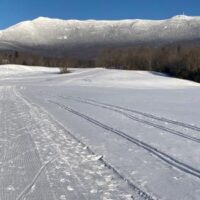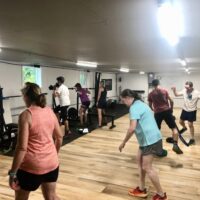Another week is upon us, and the training must go on! This Masters Workout of the Week is a focus on specific strength.
What is “specific strength” and why do we do it? Getting stronger in general will help our skiing; not just to be more powerful on climbs or more stable on descents, but also to help us execute the technique that we want to ski with. So many of us look to video clips and drills to improve our technique…both of these are super critical to improvement, but without enough strength to execute and maintain this technique we might only be able to ski the way we want for a couple kilometers before the correct body position and movements begin to suffer.
Specific strength is a way to isolate a muscle group in a ski-specific setting so that we can improve its capabilities. With specific strength work, you can also get a feel (literally) for the bigger picture of ski technique, and how different muscle groups play a role in contributing to powerful motions. Double poling for a long period of time will really make you appreciate how handy your legs can be in a hilly classic race. Likewise, doing a lot of skating without poles might make you realize how much you can rely on your arms and poles for balance rather than power and propulsion.
And those last two sentences give away a bit about the two most basic types of specific strength…double pole work and no-pole skate work. Both involve the core, and one really targets the upper body while the other engages the lower.
Some athletes like to combine workouts and do a ski with a set amount of no-pole skating and a set amount of double poling (usually with skate poles, as you are on skate skis). However, I prefer for a workout to have one focus and technique at a time unless it is a combination workout aiming for a long distance. With one technique at a time, you can get that better overall picture of how components compliment one another.
For example, you can incorporate a chunk of double poling into the middle of a classic rollerski, but it’s likely that the beginning and ending parts of that classic ski will also involve some double poling…you can therefore have a better feel of when/where it makes most sense to double pole during OTHER parts of your ski, having double poled on all sorts of terrain during a specific strength “set”. The same goes for skating, but more-so with tempo and body position…without poles you can’t quite rely on raw upper body power to compensate for good body position, driving knees, and engaged hips.
The Workout:
1 hour classic ski or skate ski
[IF CLASSIC] incorporate 20 minutes of double poling only during the middle third of the ski
[IF SKATE] incorporate 20 minutes of no-pole skating during the middle third of the ski
Try to notice your complete technique during the first and third components of the ski!




Comments are closed.